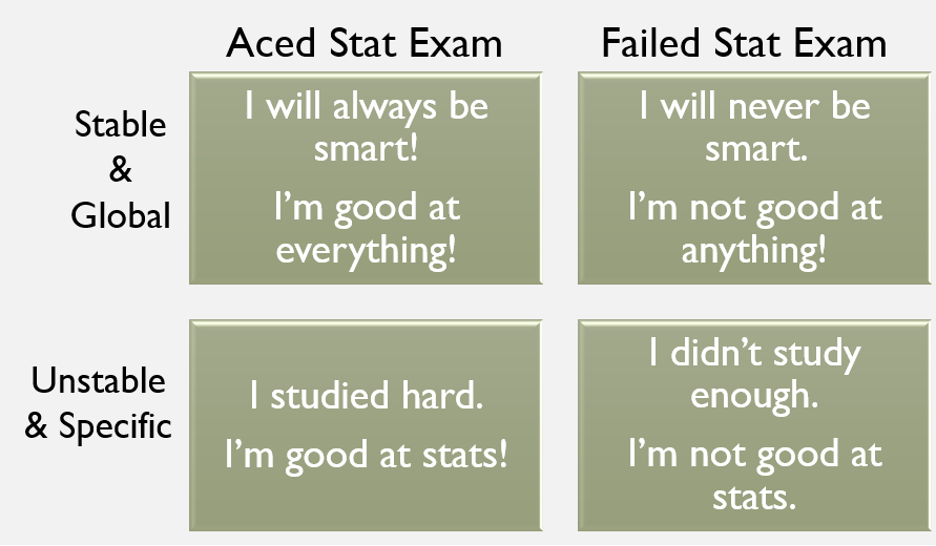Tracy and Robins (2007c) investigated whether the attributions for authentic and hubristic pride differ. In this study, participants were randomly assigned to read scenarios meant to elicit authentic or hubristic pride. The scenarios manipulated the attributions participants made for success on a college exam. All scenarios included internal attribution of the participant achieving the exam grade. Each scenario included only one manipulation of the independent variable. After reading each scenario, participants self-reported the extent to which they would feel authentic pride and hubristic pride.
Within-Subjects IV #1: Manipulated Stability Attributions
Condition 1: Stable attribution (due to IQ, personality)
Condition 2: Unstable attribution (due to effort, situation)
Within-Subjects IV #2: Manipulated Globality Attributions
Condition 1: Specific Attribution – one domain in life / good act
Condition 2: Global Attribution – whole self
2 Dependent Variables:
DV #1: Self-reported authentic pride
DV #2: Self-reported hubristic pride
Figure 9 displays the results for IV #1: manipulating stability attributions. Internal, unstable attributions led to greater authentic pride than internal, stable attributions. This means that when people attribute a good act to something unstable about the self people report more authentic pride than when they attribution a good act to something unchanging about the self. The two stability attributions did not result in differences on self-reported hubristic pride.
Figure 9
Findings for IV #1 Stability Attributions
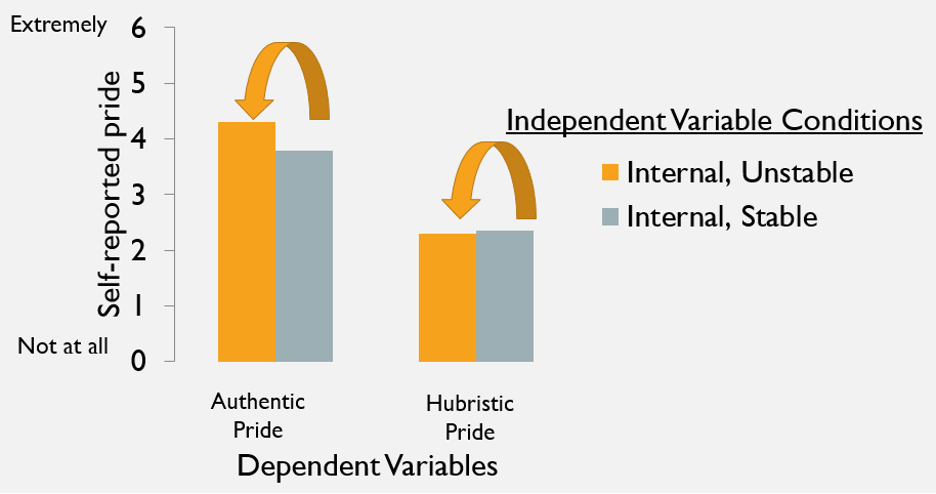
Adapted from “The psychological structure of pride: A tale of two facets,” by J.L. Tracy and R.W. Robins, 2007c, Journal of Personality and Social Psychology, 92(3), p. 518. (https://doi.org/10.1037/0022-3514.92.3.506) Copyright 2007 by the American Psychological Association
Figure 10 shows the results for IV #2, in which globality attributions were manipulated. Internal, specific attributions resulted in more authentic pride than internal, global attributions. Scenarios with internal, global attributions resulted in more hubristic pride than authentic pride. These findings mean that when people achieve a task, containing this achievement to a specific part of the self causes authentic pride. For instance, I succeeded on my math exam, but that doesn’t mean I will succeed on my chemistry exam. Conversely, when people achieve a success and attribute the success to ALL domains of their life, that results in the more inaccurate hubristic pride. For example, I did well on my math exam so I will do well in everything I do!
Figure 10
Findings for IV #1: Stability Attributions
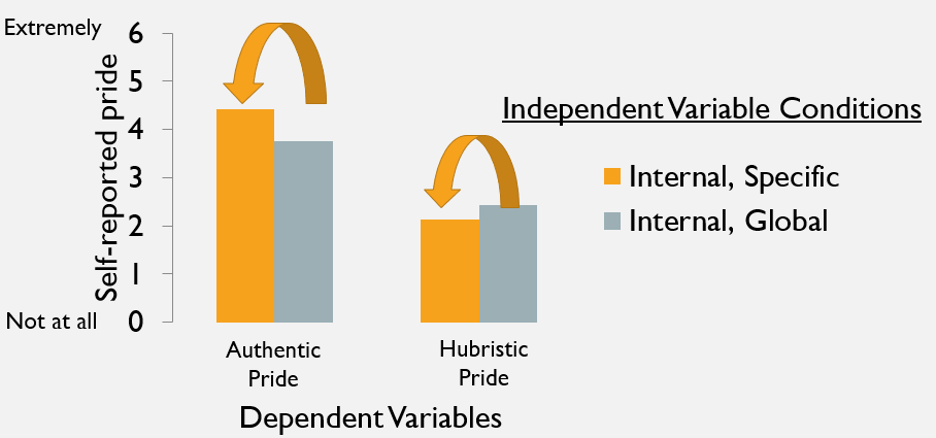
Adapted from “The psychological structure of pride: A tale of two facets,” J.L. Tracy and R.W. Robins, 2007c, Journal of Personality and Social Psychology, 92(3), p. 518. (https://doi.org/10.1037/0022-3514.92.3.506) Copyright 2007 by the American Psychological Association
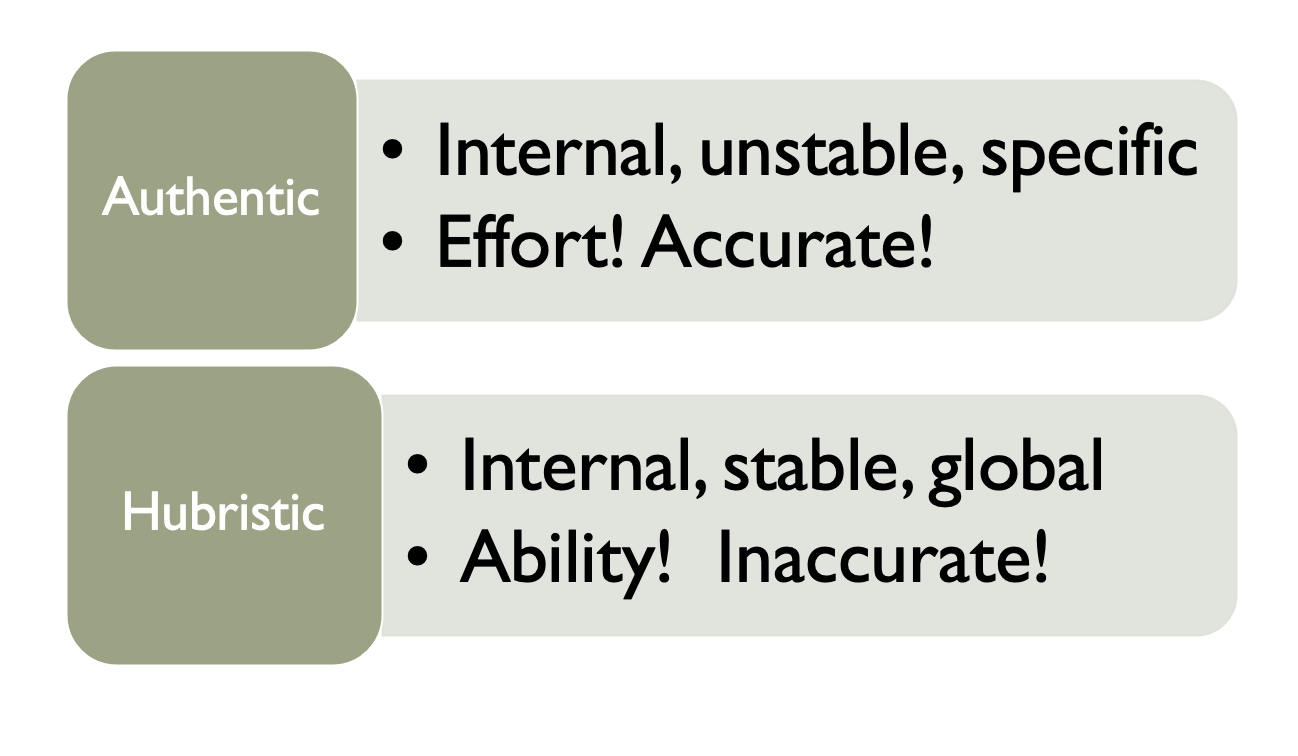
Process Model of Self-Conscious Emotions
Tracy and Robins (2004a) developed the process model of self-conscious emotions (see Figure 11). This model is based on cognitive appraisal theory and demonstrates the type of emotion people experience based on their attributions. In this model, cognitive appraisals cause the emotion we experience. In this model, locus of attribution simply means do people make an external or internal attribution? When people make an external attribution, they report a basic emotion such as fear, disgust, or anger. When people experience an internal attribution, people report a self-conscious emotion. To determine the type of self-conscious emotion people experience, we have to determine whether people appraise the emotion as negative or positive and whether people appraise the situation as caused by the stable or global self. Shame and hubris are both caused by stable attributions, whereas guilt and authentic pride are caused by stable attributions. Embarrassment does not fit exactly well within this model. According to Tracy and Robins (2004a), embarrassment is simply when we make an internal attribution in the presence of other people. It is important to note that this model fits more with Tangney’s view of negative self-conscious emotions and does not fit well with Single-Emotion Theory. Similar to Tangney, Tracy and Robins view this model as subsumed by evolutionary theory.
Figure 11
Process Model of Self-Conscious Emotions (Tracy & Robins, 2004a)
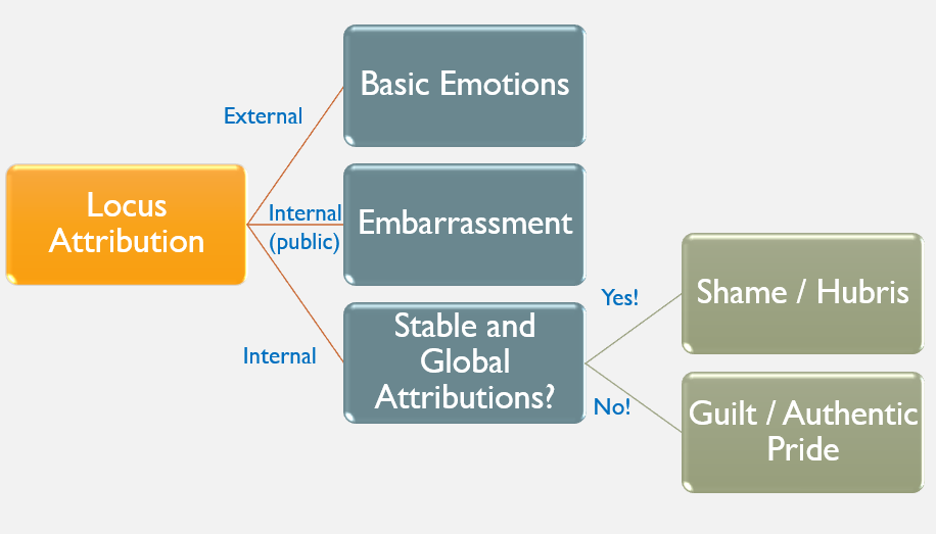
Adapted from “Putting the self into self-conscious emotions: A theoretical model,” J.L. Tracy and R.W. Robins, 2004a, Psychological Inquiry, 15(2), p. 110 (https://doi.org/10.1207/s15327965pli1502_01) Copyright 2004 by Lawrence Erlbaum
Figures 12 and 13 below are study tools to improve understanding of this model. Figure 12 displays the emotions people feel based on three attributions: success/failure, stable/global, and unstable/specific. Figure 13 provides examples of the thoughts people would experience for each emotion.
Figure 12
Three Attributions for Self-Conscious Emotions
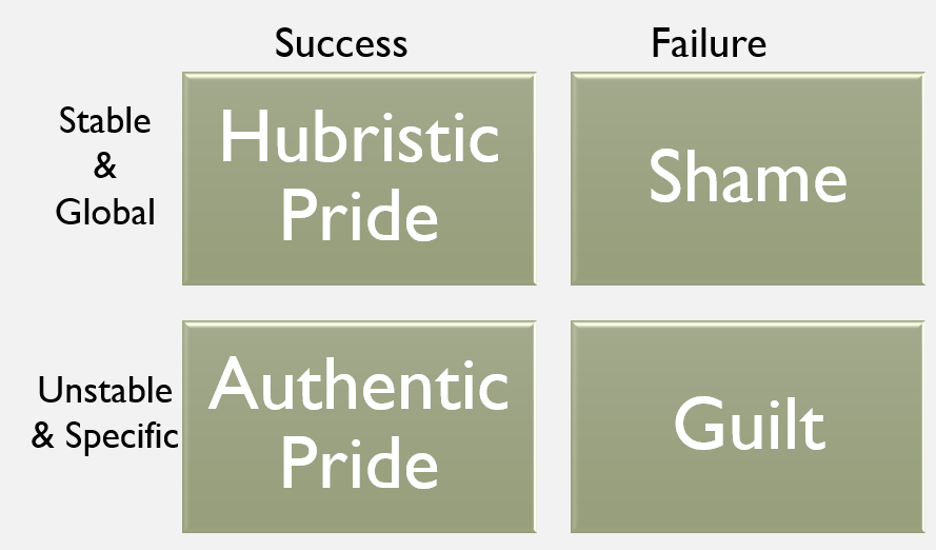
Figure 13
Examples of each Cognitive Attribution
